In today’s data-driven world, managing, storing, and quickly retrieving data is more critical than ever. Understanding RAID 10 can be a significant advantage for businesses navigating this complex landscape. RAID 10’s structure effortlessly combines RAID 1 and RAID 0 and leverages the strengths of each to deliver exceptional performance and redundancy. This powerhouse configuration meets the demands for processing large volumes of critical data and ensures it happens with impressive speed and reliability, reflecting its importance in high-stakes environments.
The unique dual approach of striping data across mirrored pairs establishes RAID 10 as a model of efficiency and reliability in data storage. This level of data protection is invaluable, especially when considering the consequences of data loss or system failures for businesses today. Particularly suited for mission-critical applications where downtime can be particularly steep, the real question is not if you can afford to implement RAID 10 but if you can afford not.
Introduction to RAID Configurations
RAID, which stands for Redundant Array of Independent Disks, has been a cornerstone in enhancing the performance and reliability of data storage systems for decades. Developed in the late 20th century, RAID technology combines multiple disk drives into a single unit to provide data redundancy and, in some configurations, improved speed. The various RAID levels, such as RAID 0, 1, and 5, serve different purposes. RAID 0, for instance, focuses on speed by using striping but lacks redundancy. RAID 1, on the other hand, emphasizes data redundancy through mirroring, sacrificing available storage capacity. RAID 5 combines speed and redundancy, although not as efficiently as different configurations.
The Unique Structure of RAID 10
RAID 10, often called 1+0, merges the best aspects of RAID 1 and 0 to create a highly efficient and reliable storage solution. By striping data across mirrored pairs of disks, RAID 10 ensures that data is duplicated and distributed, minimizing the risk of loss due to drive failure. The system effectively balances the need for speed and redundancy in data-driven environments. This configuration is particularly advantageous for businesses and applications where downtime is not an option, as RAID 10 enables continuous data availability despite multiple concurrent disk failures.
Benefits of Implementing RAID 10 in Data Centers
Implementing RAID 10 in data centers combines improved data security with exceptional read and write speeds. One of RAID 10’s advantages is its robustness, making it an ideal fit for high-performance computing environments. Recent data management trends show that the demand for secure and fast data processing solutions continues to rise. RAID 10 fulfills this need by providing uninterrupted access to data, even in critical failure scenarios. Its resilience against simultaneous failures makes it particularly valuable for industries where real-time data accessibility is crucial.
Comparing RAID 10 with Other RAID Levels
Understanding how RAID 10 compares with other RAID levels is essential for determining the appropriate solution for specific data requirements. While RAID 0 provides speed through data striping, it lacks the redundancy offered by RAID 10. Conversely, RAID 1, which focuses on redundancy, reduces usable storage capacity. RAID 5 provides a middle ground with its speed, storage efficiency, and fault tolerance, but it doesn’t perform as well under failure conditions or in high-demand environments. RAID 10, though significantly more costly due to the need for additional drives, provides unparalleled advantages where data integrity and access speed are critical.
Applications of RAID 10
Industries with considerable data demands, such as finance, healthcare, and media production, frequently implement RAID 10 to meet operational requirements. These sectors rely heavily on fast and reliable data access and storage solutions to function effectively. Examples of companies leveraging RAID 10 to maintain seamless operations and data security, preventing costly downtime and data breaches. Businesses can use utilization reports to glean insights into best practices and practical applications, which showcase RAID 10’s remarkable ability to handle challenging data environments.
Challenges and Limitations of RAID 10
Despite its manifold benefits, RAID 10 presents specific challenges that businesses must consider. The primary drawback is the cost, as RAID 10 requires twice the number of drives to provide redundancy, impacting budgetary allocations. Additionally, the complexity of maintaining a RAID 10 setup can require sophisticated technical expertise and ongoing management to ensure optimal performance and prevent potential failures, which can deter less technically equipped organizations.
Future of Data Storage and RAID Technologies
The future of data storage is dynamic, with emerging technologies like cloud storage and non-volatile memory express (NVMe) disks set to revolutionize how data is stored and managed. RAID technologies, including RAID 10, will likely incorporate these advancements to offer enhanced storage solutions. As businesses grapple with burgeoning data demands, a clear understanding of RAID configurations like RAID 10 can equip them with the necessary tools to manage their digital assets efficiently and securely.
Conclusion
RAID 10 is a superior choice for organizations seeking speed and redundancy in data storage. Its adept management of critical data efficiently positions it as a favored option across various industries. When implemented with the right strategies and insights, RAID 10 can significantly enhance an organization’s data storage capabilities, providing robust and reliable data management solutions that meet and exceed today’s business demands.

